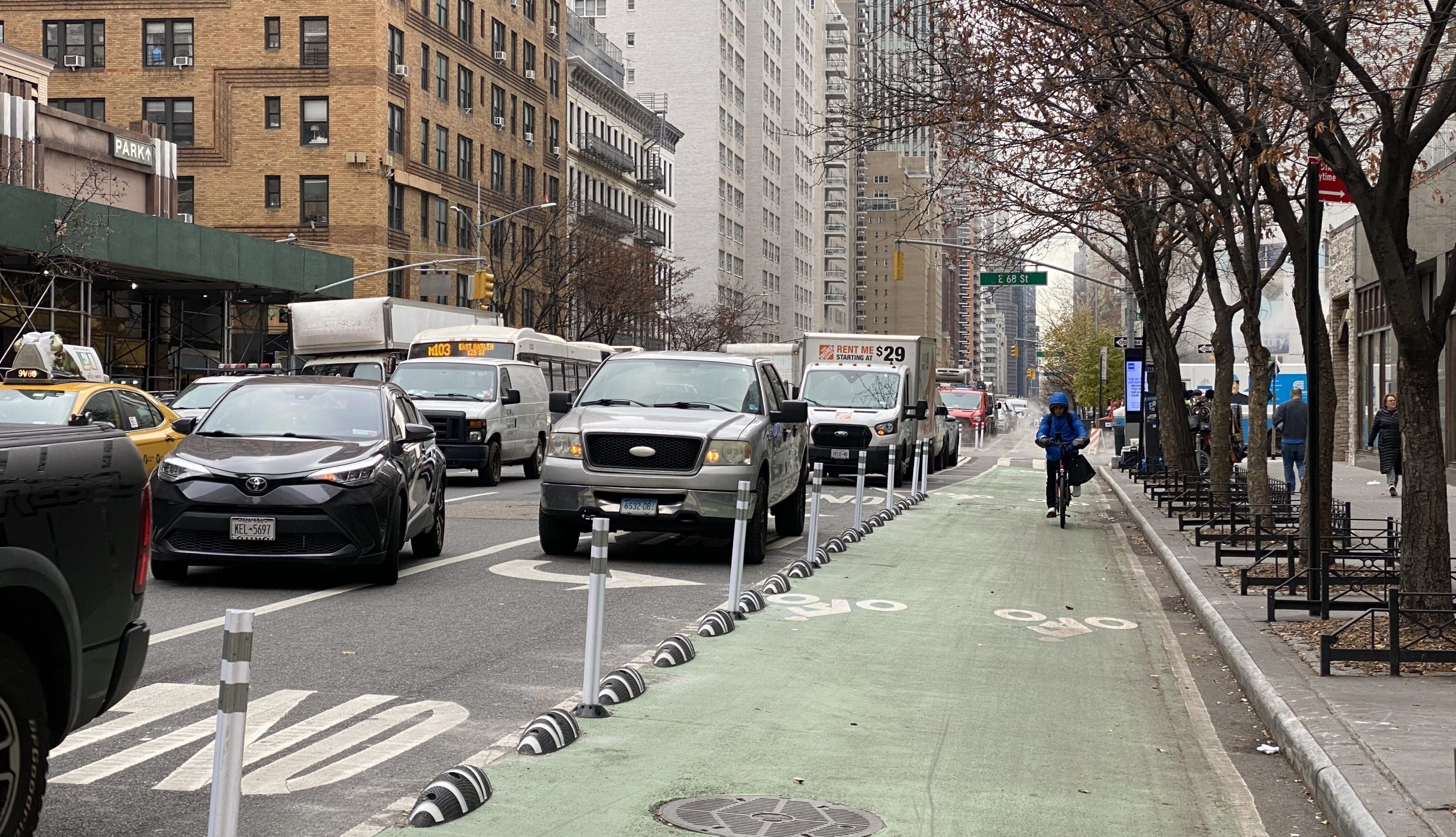The city’s redesign of Third Avenue adds a nice, wide protected bike path, but with its frequently blocked bus lane, the overhaul of nearly 40 blocks from Midtown to the Upper East Side doesn't really earn its "complete street" name.
The Department of Transportation's redesign is similar to the bus and bike lanes officials added over on First Avenue back during the Bloomberg administration in 2010, and safe street advocates have lamented that the city didn't think bigger to meet the moment, nearly a decade-and-a-half and two mayoral administrations later.
City officials in Paris built out massive two-way bike lanes to encourage the higher ridership they want to see, not just meeting the current demand, transportation officials told Streetfilms.
The huge room for improvement became clear when Curbed released a design two years ago of how the city could "perfect the New York City Street" on Third Avenue by reducing the car lanes to two and adding space for pedestrians, bikes, buses, outdoor dining, and containerized garbage.

The architecture and design firm behind those schematics, WXY, cautiously embraced DOT’s "complete street" design of Third Avenue as mere "light-touch improvements" that will hopefully lay the groundwork for a more robust redesign.
DOT's revamp stretches 1.9 miles across 37 blocks of Third Avenue, between 59th and 96th streets, repurposing two of seven lanes dedicated to the movement and storage of cars into a curbside protected bike lane and an offset bus lane.
Starting at the southern end, the changes are an obvious improvement over the highway-like avenue further downtown, where all of the 70-foot-wide roadway still prioritizes the automobile.
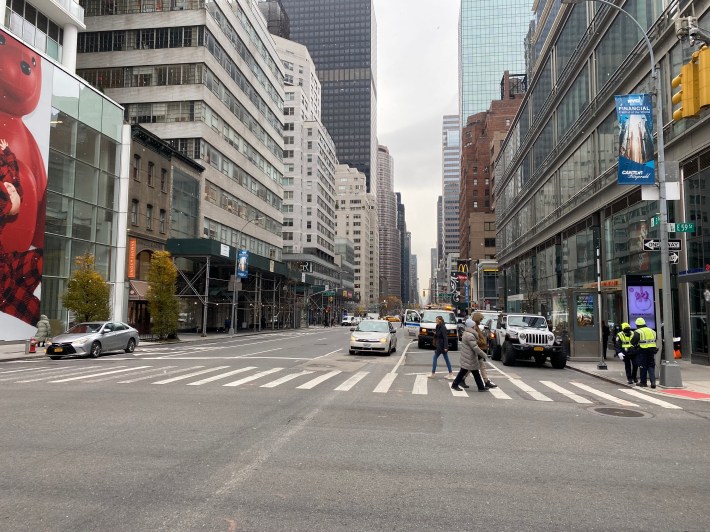
The bike lane was unfortunately already blocked by construction by the second block north of E. 60th Street, and the contractors failed to set up the legally required safe detour. A driver parked in what would have been the bike lane had 72 violations since 2016, including five speeding tickets, two red light tickets, and dozens of parking violations.
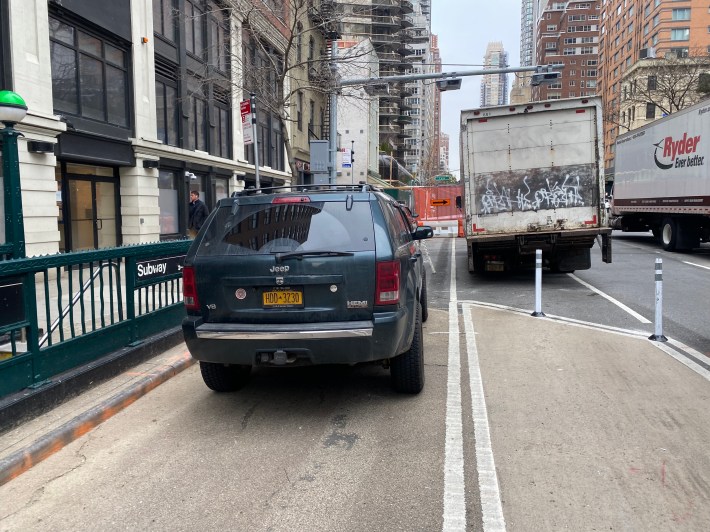
Except for another construction zone blocking one block further uptown and the paths were blissfully clear of obstructions and felt roomy enough for two people to easily ride side-by-side.
A great bike lane
The lane is mostly nine feet wide with a three-foot buffer, but at two uphill segments — between 64th to 66th streets and 80th and 82nd streets — it widens to 11 feet of green paint to give passing riders more space, such as people using e-bikes and other forms of micromobility.
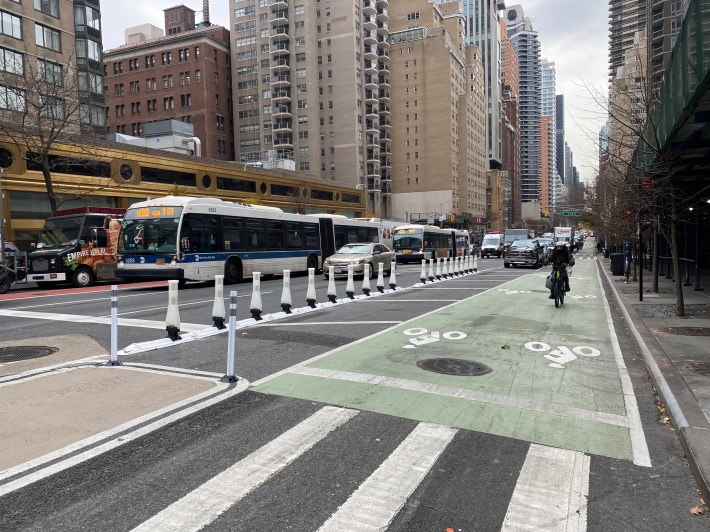
The typical protected bike lanes on Manhattan’s avenues are six feet wide with a five-foot buffer, so the total space reclaimed from cars is the same, just with a wider portion dedicated to green paint and a narrower cross-hatched buffer.
At some of the wider sections, DOT also installed “armadillo” dividers to protect the bike lane from turning drivers, which the agency unveiled in Union Square last year.
The plastic lumps and bollards kept motorists out of the bike lane.
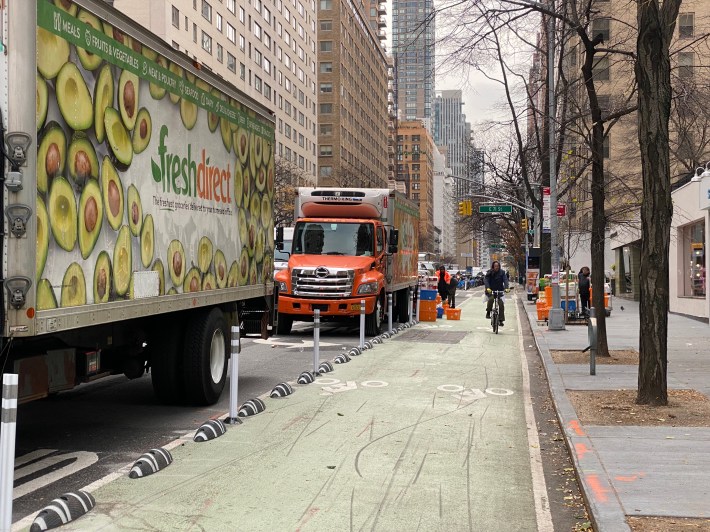
The agency also installed painted pedestrian islands at intersections, kept clear with flex posts or more effectively with bike racks. These methods to ban cars from parking right up against the crosswalk for better visibility, dubbed “daylighting,” has been an increasingly popular safety treatment in the city.
On the other hand...
On the east side of the street is a new bus lane, which is supposed to speed up commutes for some 50,000 daily riders on four different bus lines that average just over 5 miles per hour during rush periods.
The red painted path is offset from a parking lane along the curb, but many drivers illegally double-parked in the bus lane, forcing buses to snake through regular traffic.
Our own @kduggan16 is on Third Avenue in Manhattan right now as @NYC_DOT cuts the ribbon. Other outlets are having a hard time deciding how to cover it, judging by the mock-up covers we've been seeing): pic.twitter.com/CWvMCaB9H7
— Streetsblog New York (@StreetsblogNYC) December 7, 2023
The redesign ends at 96th Street where the road resumes its old configuration, spitting cyclists and buses back out into five lanes of car traffic.
When DOT first released its proposal in fall of 2022, advocates and experts appreciated the upgrade but urged DOT to lean more into the vision part of Vision Zero for Third Avenue by redesigning the road more for the needs of the future, and not just making some adjustments to a 13-year-old redesign DOT implemented on First Avenue.
Nearly three-in-four households (71 percent) in Community Board 8 don’t own a car, according to data crunched by the Massachusetts Institute of Technology, and the area is home to Lexington Avenue subway line, plus the new Second Avenue subway.
Nevertheless, cars still retain the majority of the road space on this “complete street,” with three moving lanes and two parking lanes.
Pols previously called for expanding the sidewalk and adding more loading zones for deliveries, revamps which would easily fit on this huge roadway.
Cyclists already use the new bike lanes in both directions, showing the need for a two-way cycle path.
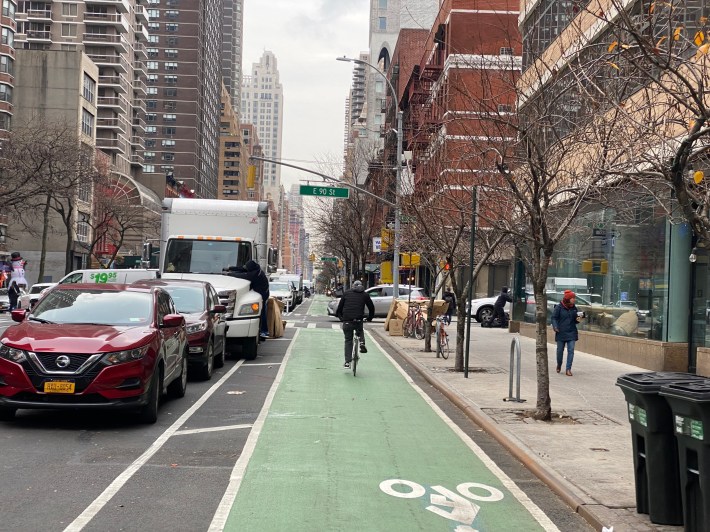
The agency said in a press release on Thursday that it would keep monitoring the redesign, with a focus on capacity and "whether it can safely and comfortably accommodate micromobility growth."
"This transformative redesign of Third Avenue will make the street safer for everyone—whether you are walking, biking, or driving—and helps prioritize the tens of thousands of bus riders who rely on this street every day for safe bus service," said DOT Commissioner Ydanis Rodriguez.
